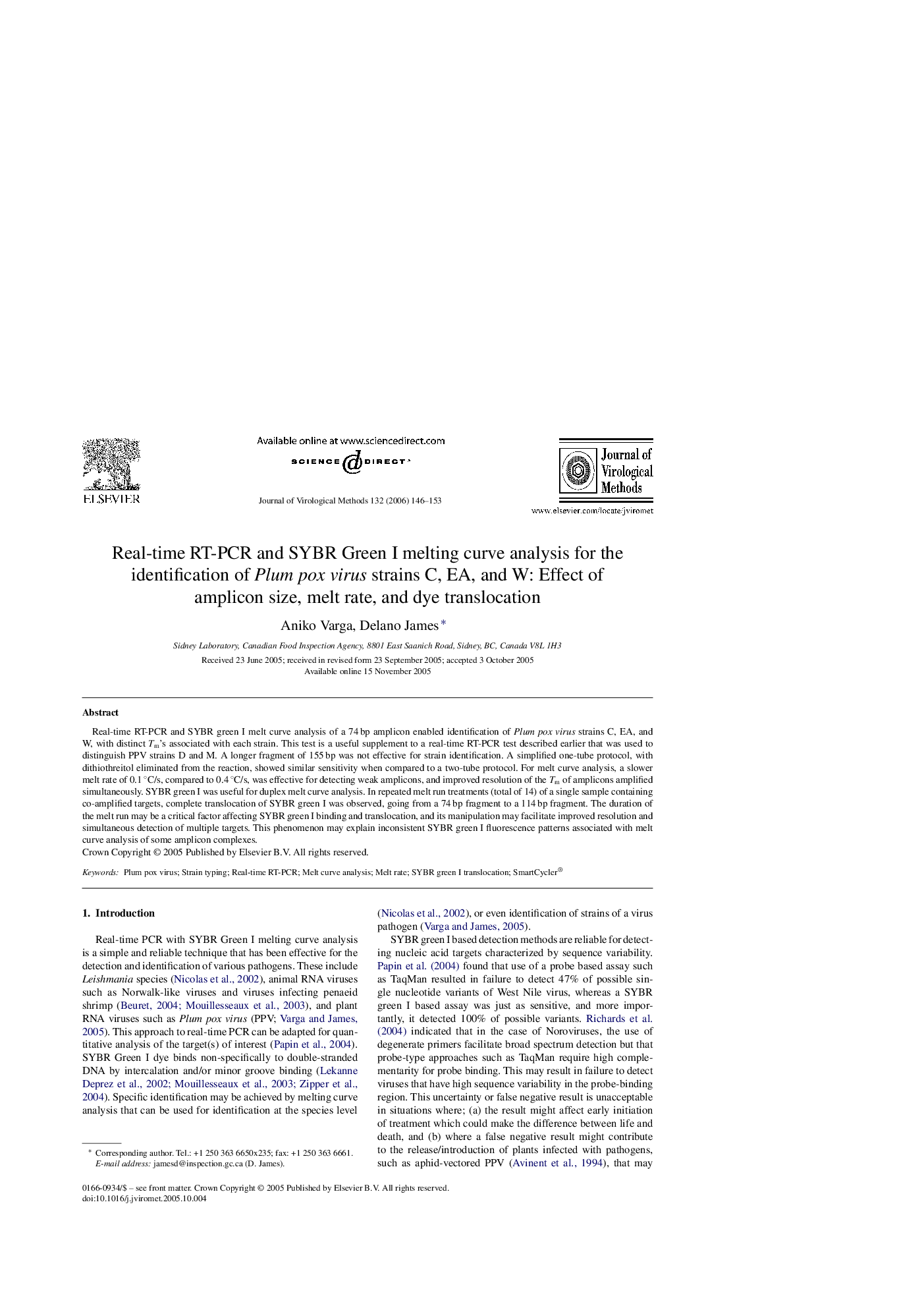| Article ID | Journal | Published Year | Pages | File Type |
|---|---|---|---|---|
| 3408651 | Journal of Virological Methods | 2006 | 8 Pages |
Real-time RT-PCR and SYBR green I melt curve analysis of a 74 bp amplicon enabled identification of Plum pox virus strains C, EA, and W, with distinct Tm's associated with each strain. This test is a useful supplement to a real-time RT-PCR test described earlier that was used to distinguish PPV strains D and M. A longer fragment of 155 bp was not effective for strain identification. A simplified one-tube protocol, with dithiothreitol eliminated from the reaction, showed similar sensitivity when compared to a two-tube protocol. For melt curve analysis, a slower melt rate of 0.1 °C/s, compared to 0.4 °C/s, was effective for detecting weak amplicons, and improved resolution of the Tm of amplicons amplified simultaneously. SYBR green I was useful for duplex melt curve analysis. In repeated melt run treatments (total of 14) of a single sample containing co-amplified targets, complete translocation of SYBR green I was observed, going from a 74 bp fragment to a 114 bp fragment. The duration of the melt run may be a critical factor affecting SYBR green I binding and translocation, and its manipulation may facilitate improved resolution and simultaneous detection of multiple targets. This phenomenon may explain inconsistent SYBR green I fluorescence patterns associated with melt curve analysis of some amplicon complexes.
